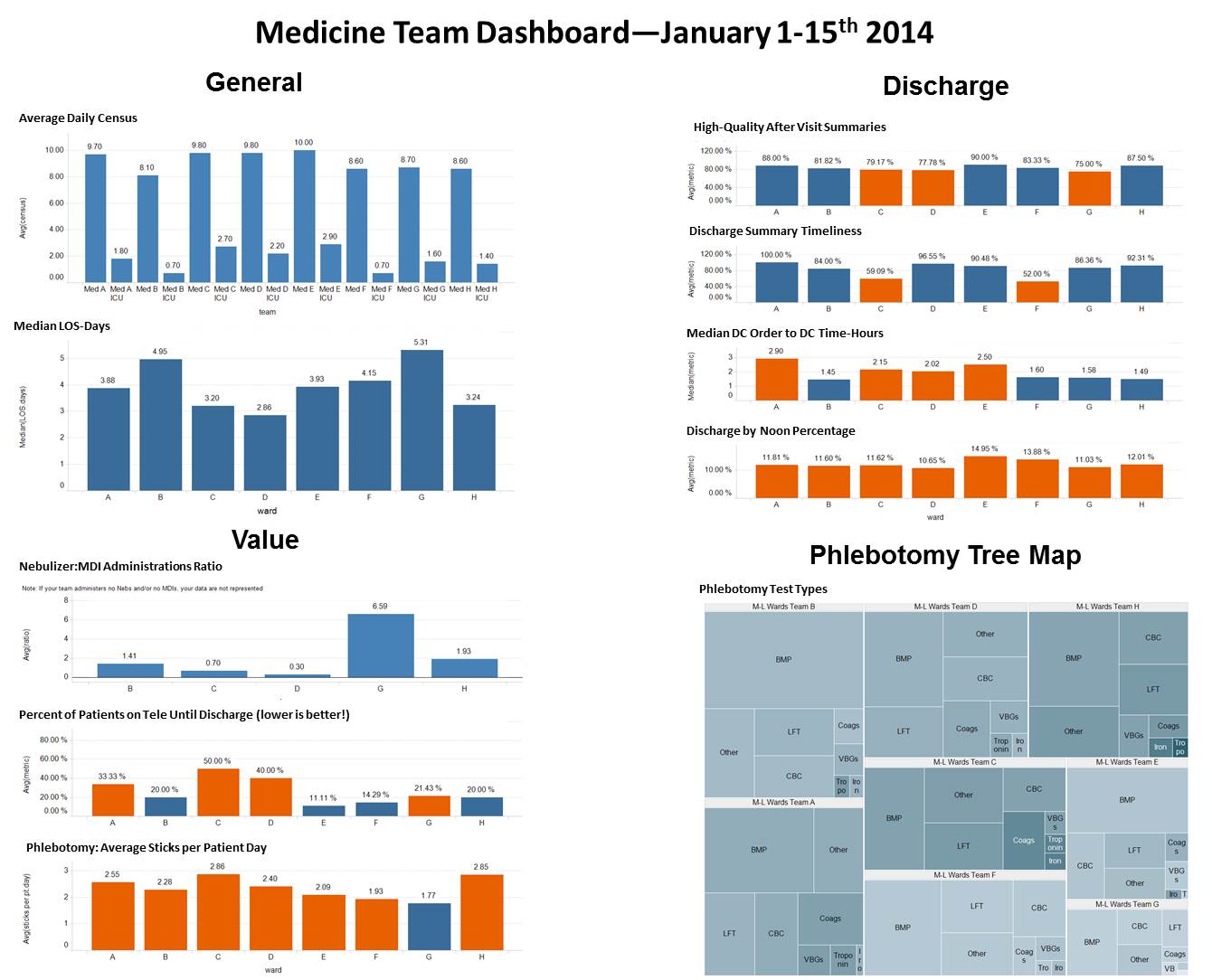Background: To maximize its effectiveness, performance feedback must be personalized, accurate, timely, and visually appealing. In the clinical environment, effective feedback must therefore extract accurate data from an electronic health-record system, link patient care activity to care teams, and report on meaningful metrics. This requires a synthesis of EHR data, scheduling data, which is often stored outside the EHR, and quality improvement priorities. Given the enormous amount of patient data and linkage to complex scheduling, we turned to computer scripting to automate these tasks, allowing for frequent analysis and timely feedback of the data.
Purpose: To provide timely and accurate team-level clinical EHR data feedback on key QI and value metrics in a visually appealing dashboard format.
Description: Our medicine teaching service is organized into 8 teams, each with an attending physician, a resident, two interns, and 1-2 medical students. Our institution uses Epic 2012 ® as our EHR system. We regularly query the database housing EHR data by using customized reports on important quality improvement measures. The output of large tabular datasets are parsed and analyzed at the patient-level automatically by a computer program written in R, open-source free statistical computing software. The program then assigns the patient-level data to the responsible medicine teams by dynamically linking to the online scheduling system, Amion.com ©, by way of an application programming interface (API). The cleaned data is then pushed into an industrial strength visual analytics program (Spotfire®), to produce a team-level dashboard that visually represents the performance of each team. This process is highly automated and reports with new data and insights can be generated with just a few clicks. These dashboards are then extracted to a PDF report that is sent to the teams during their service (Figure 1).
Conclusions: Leveraging the EHR is often proposed as a way to facilitate performance feedback, but doing so is technically challenging. This innovation brings together multiple data science tools to provide a robust visual presentation of clinical data at the medicine team level by linking a commonly used EHR with widely used physician scheduling software. This feedback is timely and actionable and allows teams to collaboratively address areas needing improvement to positively impact the quality of patient care. This data infrastructure can serve as a template for other institutions to provide team-level performance feedback.
